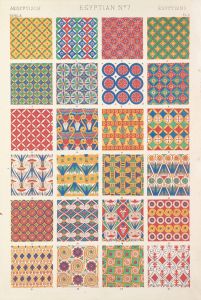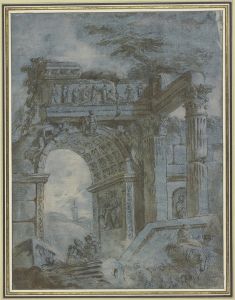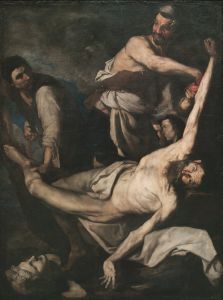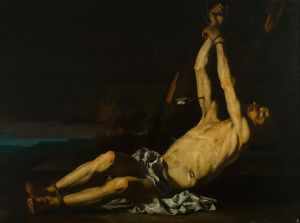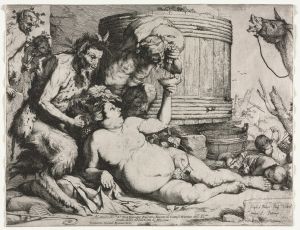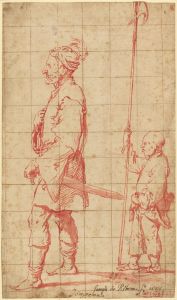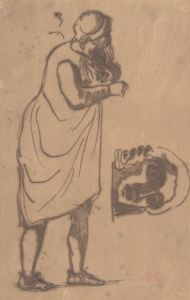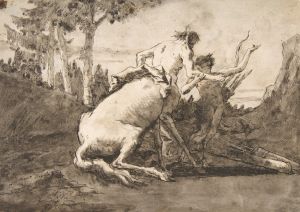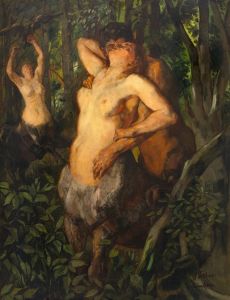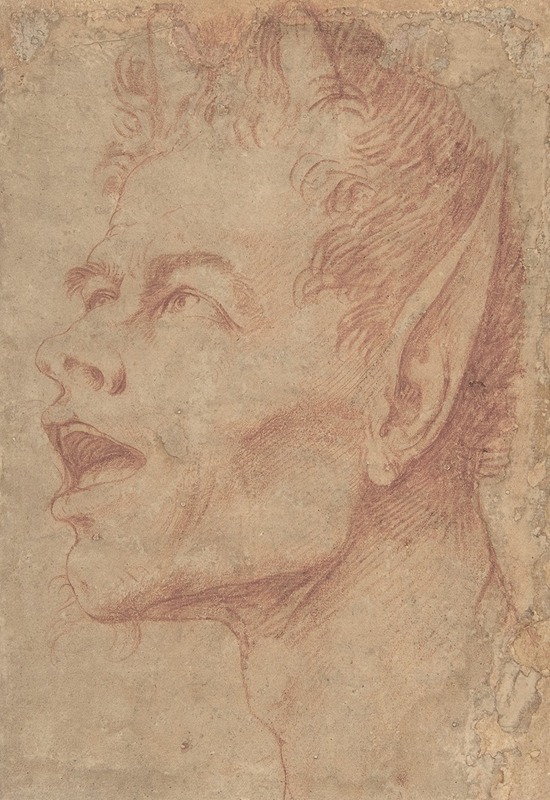
Head of a Satyr Facing Left
A hand-painted replica of Jusepe de Ribera’s masterpiece Head of a Satyr Facing Left, meticulously crafted by professional artists to capture the true essence of the original. Each piece is created with museum-quality canvas and rare mineral pigments, carefully painted by experienced artists with delicate brushstrokes and rich, layered colors to perfectly recreate the texture of the original artwork. Unlike machine-printed reproductions, this hand-painted version brings the painting to life, infused with the artist’s emotions and skill in every stroke. Whether for personal collection or home decoration, it instantly elevates the artistic atmosphere of any space.
"Head of a Satyr Facing Left" is a painting by the Spanish Baroque artist Jusepe de Ribera, who was active during the first half of the 17th century. Ribera, also known as José de Ribera or by his Italian nickname "Lo Spagnoletto" (the Little Spaniard), was renowned for his dramatic use of chiaroscuro and his realistic depiction of human figures. He spent most of his career in Italy, particularly in Naples, where he became a leading figure in the Neapolitan school of painting.
The painting "Head of a Satyr Facing Left" is a fine example of Ribera's skill in capturing the human form and his interest in mythological subjects. A satyr, in classical mythology, is a creature that is part human and part goat, often associated with Dionysian revelry and known for its lascivious nature. Ribera's depiction of the satyr focuses on the head, showcasing his mastery in rendering texture and expression.
In this work, Ribera employs his characteristic use of chiaroscuro, a technique that contrasts light and dark to create a sense of volume and three-dimensionality. The satyr's face is illuminated against a dark background, highlighting the rugged features and the intense expression of the creature. The detailed rendering of the satyr's hair, beard, and horns demonstrates Ribera's keen observation and his ability to convey texture convincingly.
Ribera's interest in the grotesque and the human condition is evident in this painting. The satyr's expression is one of both wildness and contemplation, capturing the dual nature of the creature as both a symbol of untamed nature and a being capable of thought and emotion. This duality is a recurring theme in Ribera's work, where he often explores the tension between the physical and the spiritual, the earthly and the divine.
The painting is also a testament to Ribera's influence by Caravaggio, whose dramatic lighting and realistic approach to painting had a profound impact on Ribera's style. Like Caravaggio, Ribera was interested in depicting his subjects with a sense of immediacy and realism, often choosing models from everyday life to portray mythological or religious figures.
"Head of a Satyr Facing Left" is part of a broader tradition of Baroque art that sought to engage viewers through emotional intensity and vivid realism. Ribera's work, with its focus on the human form and its exploration of complex themes, continues to be celebrated for its technical brilliance and its ability to convey the depth of human experience.
The painting is housed in the Museo del Prado in Madrid, which holds an extensive collection of Ribera's works. The museum's collection provides insight into Ribera's development as an artist and his contributions to the Baroque movement. "Head of a Satyr Facing Left" remains an important piece within this collection, exemplifying Ribera's unique approach to painting and his enduring legacy in the history of art.





